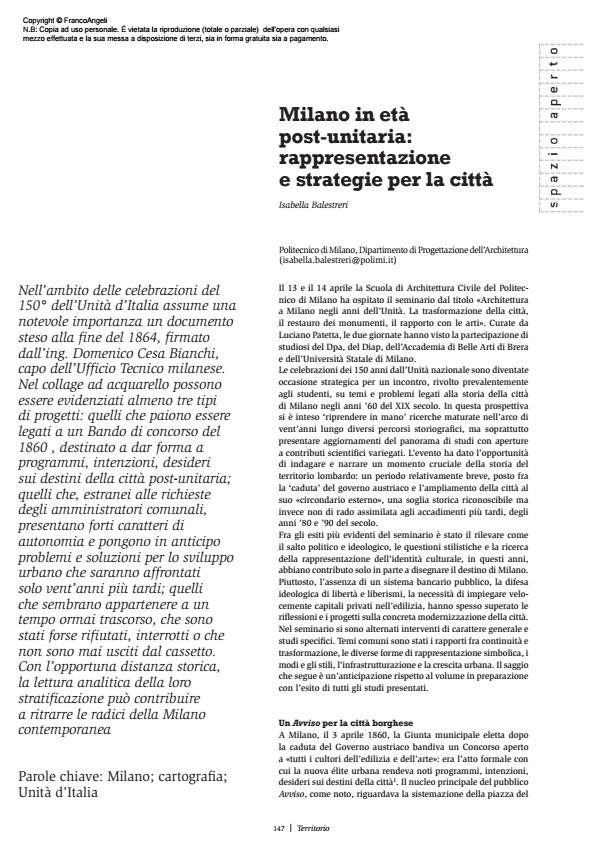Milan in post unification period: representation and strategies for the city
Journal title TERRITORIO
Author/s Iasbella Balestreri
Publishing Year 2011 Issue 2011/59
Language Italian Pages 10 P. 147-156 File size 807 KB
DOI 10.3280/TR2011-059019
DOI is like a bar code for intellectual property: to have more infomation
click here
Below, you can see the article first page
If you want to buy this article in PDF format, you can do it, following the instructions to buy download credits

FrancoAngeli is member of Publishers International Linking Association, Inc (PILA), a not-for-profit association which run the CrossRef service enabling links to and from online scholarly content.
On the occasion of the celebrations of the 150th anniversary of the Unification of Italy a document produced at the end of 1864 and signed by ing. Domenico Cesa Bianchi, head of the Milan Planning Department, is of particular importance. It is a plan of the entire city, inclusive of some suburbs, to a 1:3,000 scale, which, as if in a mosaic, contains a series of projects and initiatives shown in layers occurring immediately before and after the formation of the first City Council in Unified Italy. At least three types of project can be identified in the watercolor collage: those which appear to be associated with an 1860 competition, destined to give shape to programmes, intentions and desires regarding the post unification future of the city; those which, extraneous to the requests of the city administration, present strongly independent features and, ahead of their time, pose problems and solutions for urban development which were not to be addressed until twenty years later; those which seem to belong to a time which is now past, which were perhaps rejected, interrupted or never taken out of the drawer. With an appropriate historical approach, a careful examination of how they are layered may help to portray the roots of contemporary Milan.
Keywords: Milan; cartography; Unification of Italy
Iasbella Balestreri, Milano in età post-unitaria: rappresentazione e strategie per la città in "TERRITORIO" 59/2011, pp 147-156, DOI: 10.3280/TR2011-059019